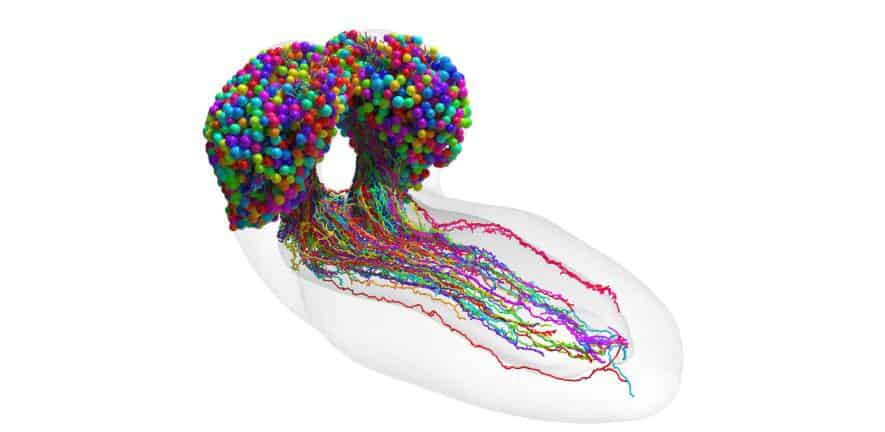Imagine for a minute the brain of a fruit fly larva (Drosophila melanogaster). Yes, it’s as small as you are probably thinking. But what goes on inside it is actually very impressive. Researchers have created the first map showing all neurons and how they are linked together in the brain of the fruit fly larva — covering 548,000 connections between 3,016 neurons.

The map identifies the different types of neurons and their pathways, including the interactions between the two sides of the brain and between the brain and the ventral nerve cord. The researchers said this research will help to understand the principles by which signals travel through the brain at the neural level, leading to behavior and learning.
“The way the brain circuit is structured influences the computations the brain can do. But, up until this point, we haven’t seen the structure of any brain except in very simple organisms,” Professor Marta Zlatic, one of the study authors and a researcher at the University of Cambridge’s Zoology Department, said in a media statement.
Looking inside the brain
Until now, researchers had created this type of map, called a connectome, for the brains of two types of worms and a sea squirt larva – a much simpler task, as these brains only had a few hundred neurons each. The complete map of the larval fly brain took about 12 years, which means about a single neuron a day, according to a statement by the research team.
To build the map, they used thousands of slices of the larva’s brain imaged with a high-resolution microscope. This enabled the reconstruction of the fly’s brain, with the researchers annotating all connections between the neurons. They also developed computational tools to identify pathways of information flow and types of circuit patterns in the insect’s brain.
Then came what they said was the most difficult part, understanding and interpreting what they saw. The researchers found 75% of the most well-connected neurons were linked to the brain’s learning center. And while the brain had layers of connections between them, it also had shortcuts to skip layers, making up for the low number of neurons.
The brain of the fruit fly larva, like the human brain, has a right and left side. But while in humans each side can have very different wiring, with circuits on the left involved in speech and circuits on the right that can recognize faces, this wasn’t the case in the larva. “One surprise [was] how similar the right and the left sides are,” Joshua Vogelstein, study author, told NPR.
As a next step, the researchers will look at the structures used for behavioral functions and examine the connectome activity while the fly does specific activities. They also expect to see similar patterns in other animals.
“In the same way that genes are conserved across the animal kingdom, I think that the basic circuit motifs that implement these fundamental behaviors will also be conserved,” said Zlatic.
The study was published in the journal Science.






